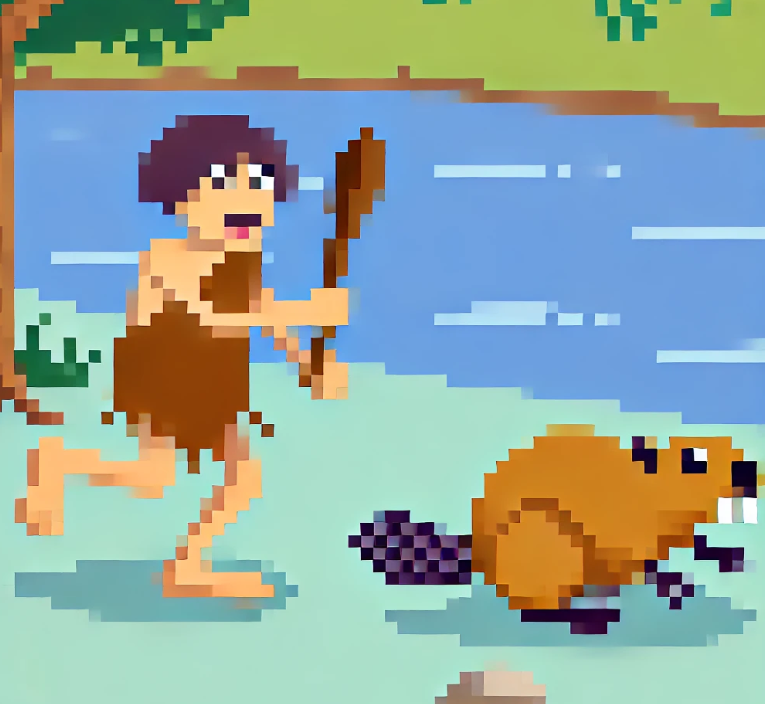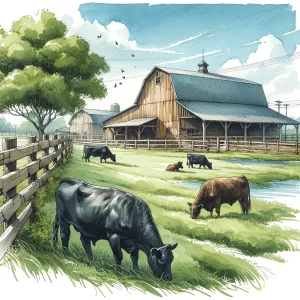
What Beavers Can Teach Us About Early Humans
When we think of ancient human diets, our minds often leap to images of early humans hunting mammoths or large deer. But what if the reality was far more diverse and intricate than that? Recent research from Bilzingsleben, a site in central Germany, reveals something extraordinary about the eating habits of our ancestors from around 400,000 years ago. This discovery challenges long-standing beliefs about early human diets and paints a richer, more complex picture of how our ancestors survived—and thrived—in their environment.
Unearthing a Forgotten Feast
For years, archaeologists and researchers believed that early humans primarily hunted large animals, like mammoths and bison, for sustenance. These massive creatures provided an abundance of meat, which, for a long time, was thought to be the cornerstone of our ancestors’ diets. However, this perspective largely stemmed from the bias in the fossil record—big bones tend to be preserved better than small ones, leading to an overrepresentation of large mammals in archaeological sites.
But the recent findings from Bilzingsleben upend this narrative. Researchers discovered evidence that early humans in this region systematically hunted and exploited beavers. Yes, beavers—those industrious, dam-building rodents we often associate with serene forest streams. The sheer volume of beaver remains at the site, coupled with cut marks on their bones, suggests that these animals were a regular and significant part of the human diet.
The Hidden Nutritional Treasure of Beavers
Why beavers, you might wonder? What made these creatures such a prized catch for early humans? The answer lies in their nutritional value and the unique resources they offer.
Beavers are not just about meat. Their bodies are a treasure trove of fat, particularly during the autumn when they bulk up for winter. This fat was crucial for early humans, especially in the colder climates of Europe. Unlike leaner games, beavers provided a rich source of calories that could sustain our ancestors through harsh winters. Their large tails, in particular, were highly prized for their fat content, which was essential for energy storage.
Moreover, beaver skins were incredibly valuable. The thick, water-resistant fur offered excellent protection against the elements, making it a vital resource for clothing and shelter. Additionally, beavers produce a substance called castoreum, which early humans likely used for various purposes, including medicinal and perhaps even for luring other animals.
A Day in the Life of a Beaver Hunter
Imagine living 400,000 years ago in a small group of early humans. It’s a crisp, cold morning, and your group has set out to hunt. But instead of chasing down massive, dangerous beasts, you’re heading to a nearby river where beavers have built their dams.
Hunting beavers requires skill and patience. These animals were crafty and spent much of their time in water, making them hard to catch. Early humans likely developed specialized techniques for hunting beavers, perhaps setting traps at the entrances of their lodges or waiting for the young adults—who were most vulnerable as they searched for new territories—to venture onto land.
Once caught, the beavers were brought back to the camp, where they were meticulously butchered. The meat was consumed, the fat was stored, and the skins were carefully processed. Nothing went to waste. The community depended on these hunts, not just for survival but as a way of life that connected them deeply with their environment.
The Broader Implications: Rethinking Early Human Diets
The discovery at Bilzingsleben is more than just a fascinating tidbit about ancient diets—it challenges how we think about human evolution and adaptation. It suggests that early humans were far more adaptable and resourceful than previously thought. They didn’t just rely on the big game; they had a broad-spectrum diet that included smaller animals like beavers, which provided essential nutrients and resources.
This finding also adds a new layer to our understanding of human migration and survival in different environments. The ability to exploit a wide range of food sources would have given early humans a significant advantage as they spread across diverse landscapes, from the forests of Europe to the savannas of Africa.
Why Should We Care?
You might wonder why this matters to us today. After all, we’re far removed from the days of hunting beavers for survival. But these findings offer valuable insights into the resilience and ingenuity of our ancestors. They remind us that human survival has always depended on our ability to adapt and make the most of the resources available to us, no matter how unexpected.
In a world where food security and environmental sustainability are pressing issues, looking back at how our ancestors lived off the land can inspire us to think creatively about how we manage our resources today. Just as early humans diversified their diets to thrive in challenging conditions, we, too, must explore diverse and sustainable ways to feed our growing population.
Let’s Talk About It
What are your thoughts on the idea that early humans had a more varied diet than we previously believed? Do you think modern society could benefit from adopting a similar approach to food and resource management? Share your thoughts in the comments below!
Feed Your Curiosity:
Discover the latest scientific research and inspiring discoveries with ‘This Week in Science’! Perfect for educators and avid learners, our free weekly newsletter is a rich source of knowledge to enhance your teaching and learning journey. Subscribe now! If you liked this blog, please share it! Your referrals help This Week in Science reach new readers.



